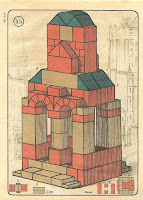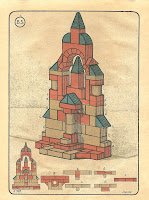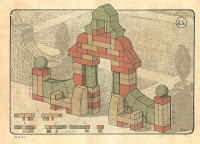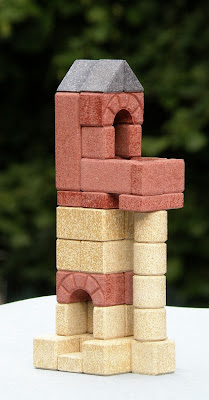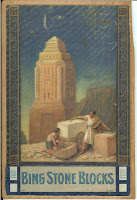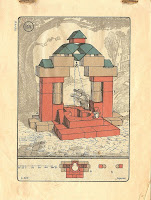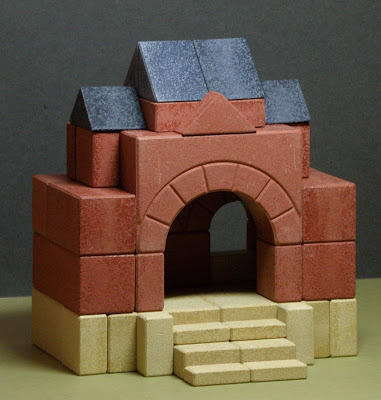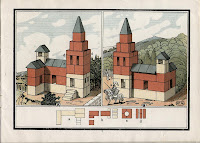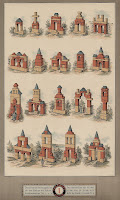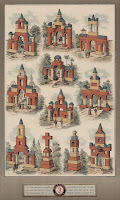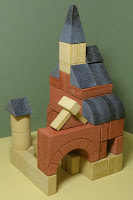
At some point Richter's felt obliged to create intermediate sets in range 2 - 4 - 6 - 8 or 1 - 3 - 5 - 7.
 Either the series was deemed too widely spaced, or it may have been primarily a matter of getting the large arch into smaller sets - even though Set 4 doesn't include the #98R large arch, set 2½ does.
Either the series was deemed too widely spaced, or it may have been primarily a matter of getting the large arch into smaller sets - even though Set 4 doesn't include the #98R large arch, set 2½ does.The odd numbers were not available, being used for Kleine Kaliber sets, so the intermediate sets were numbered 2½, 4½, 6½ in the GK NF series.
Two different GK NF 4½ sets were offered at different times with different numbers of stones.
Our example is the larger (right above),
 which at 7½x11 "cubes" is only a little smaller than a 6 at 8x12, the smaller (left) at 6½x9 is only a little larger than the smaller 4 at 6x8½ (the current 4 is 6x9).
which at 7½x11 "cubes" is only a little smaller than a 6 at 8x12, the smaller (left) at 6½x9 is only a little larger than the smaller 4 at 6x8½ (the current 4 is 6x9).The set also appears as set 3½ in the "VE" series, which took over the odd numbers after the KK sets were dropped. VE sets larger than set 5 (= GK NF 6) had metal parts, and one wonders if the two series were ever carried in parallel in the same shop.
 The VE 3½ demanded mention because the only set 4½ designs I have found so far are for the smaller set, but the VE sheet at right contains several models for this block mix, albeit sans layer plans, and is clearly numbered "3½."
The VE 3½ demanded mention because the only set 4½ designs I have found so far are for the smaller set, but the VE sheet at right contains several models for this block mix, albeit sans layer plans, and is clearly numbered "3½."Newer CDrom sets may have more designs for this set, with layer plans. I will need to get a set and see.
This block mix (minus two stones) was already in my workspace as a stand-in for the Bing B-5, which probably duplicated this exact block mix. Bing didn't have an alternate series occupying the intervening numbers and thus could number it with the more logical "5."
 These designs should appeal to Set 6 owners looking for something a little different, with few of the Set 6 stones leftover (left).
These designs should appeal to Set 6 owners looking for something a little different, with few of the Set 6 stones leftover (left).The model in the title picture in fact uses all of the Set 4½ stones, and was quite a challenge to put together without the layer plans. Recommended for puzzle fans.
Good block play.

